*This post may contain affiliate links. Read more »
Don’t worry if you’re not familiar with the name – Chè Khoai Môn simply translates to “Taro Rice Pudding.” It’s basically like if rice pudding went to Vietnamese dessert heaven and had a coconut cream baby that’s gonna set a new standard for your pudding lifestyle. My condolences to your old fave rice pudding recipe that there’s a new pudding god in town to worship!


Enter your email & I'll send it to your inbox. Plus, get great new recipes from me every week!
By submitting this form, you consent to receive emails from Cinnamon Snail.
I get it, maybe you’ve never had dessert with taro and can’t even prepare yourself for how life altering this will be. The countries I have spent time in throughout Asia are jam-packed full of deserts that changed my life forever. From banh flan, to klepon, or martaback stuffed with peanuts and chocolate, there is a lot to love in the Southeast Asian dessert universe.
This foolproof recipe has been tested the heck out of and ensures pudding success on your very first try. No more taro terror or pudding paranoia – my step-by-step instructions are tailored to help you master Che Khoai Mon. Grab some sweet rice, and let’s do this darn thing!
Jump to:
🥰Why you'll adore this taro pudding recipe
✊Vegan AF: Like all of my vegan Vietnamese recipes, this Che Khoai Mon is entirely plant-based, and brings the flavor like a son-of-a-gun without harming animals. You know what else? It’s also a gluten-free vegan recipe too!
🏆Fool-proof Method: With the step-by-step instructions in this blog post, even if you’re new to cooking, you’ll confidently create a velvety Taro Rice Pudding on your first attempt.
✅Tested and Approved Worldwide: Just like all of the vegan recipes I publish, this Che Khoai Mon recipe has undergone meticulous testing and perfection. It’s been tried and loved by over 500 recipe testers from around the globe, ensuring success no matter where you are or what ingredients you’re using.


🙌 Learn to make restaurant-quality Vietnamese food
This guide to my most popular vegan Vietnamese recipes is 100% FREE, & you'll love the actual heck out of it 🥰
🌿 Chè khoai môn Ingredients

Glutinous Rice
Glutinous rice, often called sweet rice, might sound like sugary, but it’s actually known for its stickiness when cooked, making it a great choice for pudding, and savory dishes like Nasi Kunyit. If you can’t find glutinous rice, sushi rice can step in as a close substitute.
Pandan
Pandan, with its vibrant green leaves, is a fragrant herb that imparts a unique aroma and a touch of sweetness. I love using it for making Indonesian coconut porridge with biji salak dumplings, lontong, and nasi uduk betawi. You can find it fresh or frozen in most Asian grocery stores.
Taro Root
This starchy, purple-speckled root vegetable brings a great texture and subtle flavor to the pudding. Whether you choose to use fresh taro root, pre-cut packaged taro, or frozen taro, it will meld perfectly with the glutinous rice, creating a harmonious blend of flavors and textures. WHat else can you do with it if you have some leftover? Make bubur cha cha or arbi ki sabji! For those who can’t find taro, purple sweet potato can offer a somewhat similar color and taste.
Fresh Grated Coconut (optional as a topping)
Freshly grated coconut is a lovely garnish for Che Khoai Mon, and it's the essential filling for kuih ketayap and topping for putu ayu cakes. While it’s not mandatory, its moist sweetness complements the dish wonderfully. Remember, I’m not talking about dried shredded coconut here. If fresh coconut isn’t available, use sliced, frozen coconut or simply enjoy the dessert without it.
Tapioca Starch
Tapioca starch, sometimes just called tapioca flour, is used to achieve the desired consistency of the pudding and to thicken the coconut milk topping. In a pinch, cornstarch, arrowroot, or potato starch can be substitutes.
*See the recipe card at the bottom of the page for exact quantities, nutritional info, and detailed cooking directions.
🤯Variations
Ube taro rice pudding
For a colorful twist, skip the pandan leaves and instead add ube powder to the mix. This vibrant purple variation of Che Khoai Mon combines the earthy flavors of taro with purple yam, creating a dessert that’s visually stunning and equally satisfying.
Vietnamese rice pudding with pandan jellies
Make some of the pandan jelly from my chè ba mau recipe, or sago't gulaman, and use it as a topping to the taro pudding.
📖 How to make this che khoai mon recipe
Make this perfectly by following these step-by-step instructions with important tips. Or you can follow along with the easy-to-print recipe card towards the bottom of this page.

Step One
Blend chopped pandan leaves with water for 60-90 seconds until fully pureed. If using a small blender pitcher, do this in two batches.

Step Two
Strain pandan liquid through a fine wire mesh strainer into a bowl, discarding the pulp. Gently press the pulp to extract liquid without pushing through.
Do you smell that killer aroma? So nice right? Some day make yourself a hot cup of bandrek tea for the full pandan experience. Thank me later.

Step Three
Steam taro cubes for 10-12 minutes until fork tender.
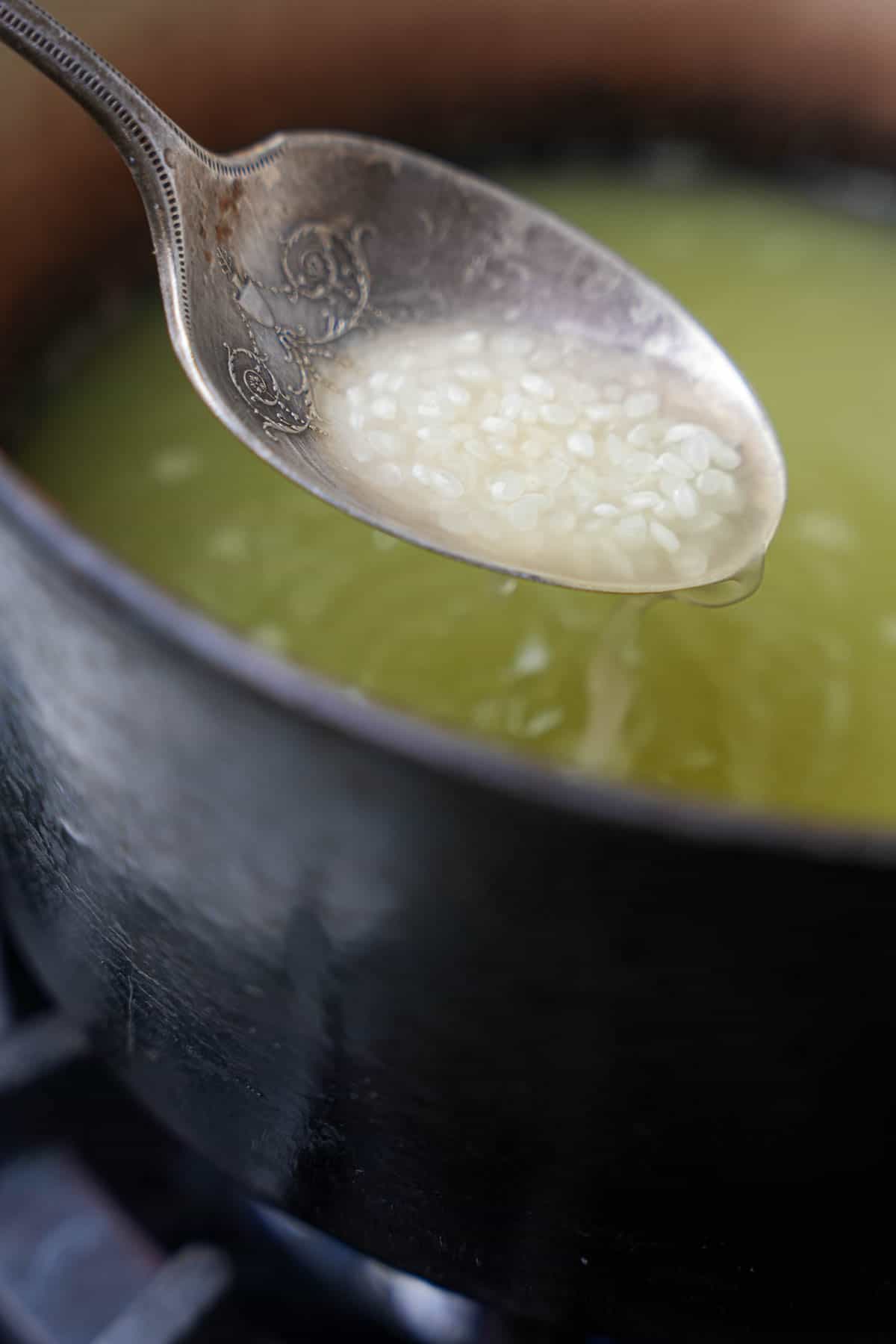
Step Four
Meanwhile, in a pot, combine rice, pandan water, salt, sugar, vanilla, and tapioca starch.
Bring mixture to a boil over medium-high heat, then lower and simmer covered for 15 minutes.
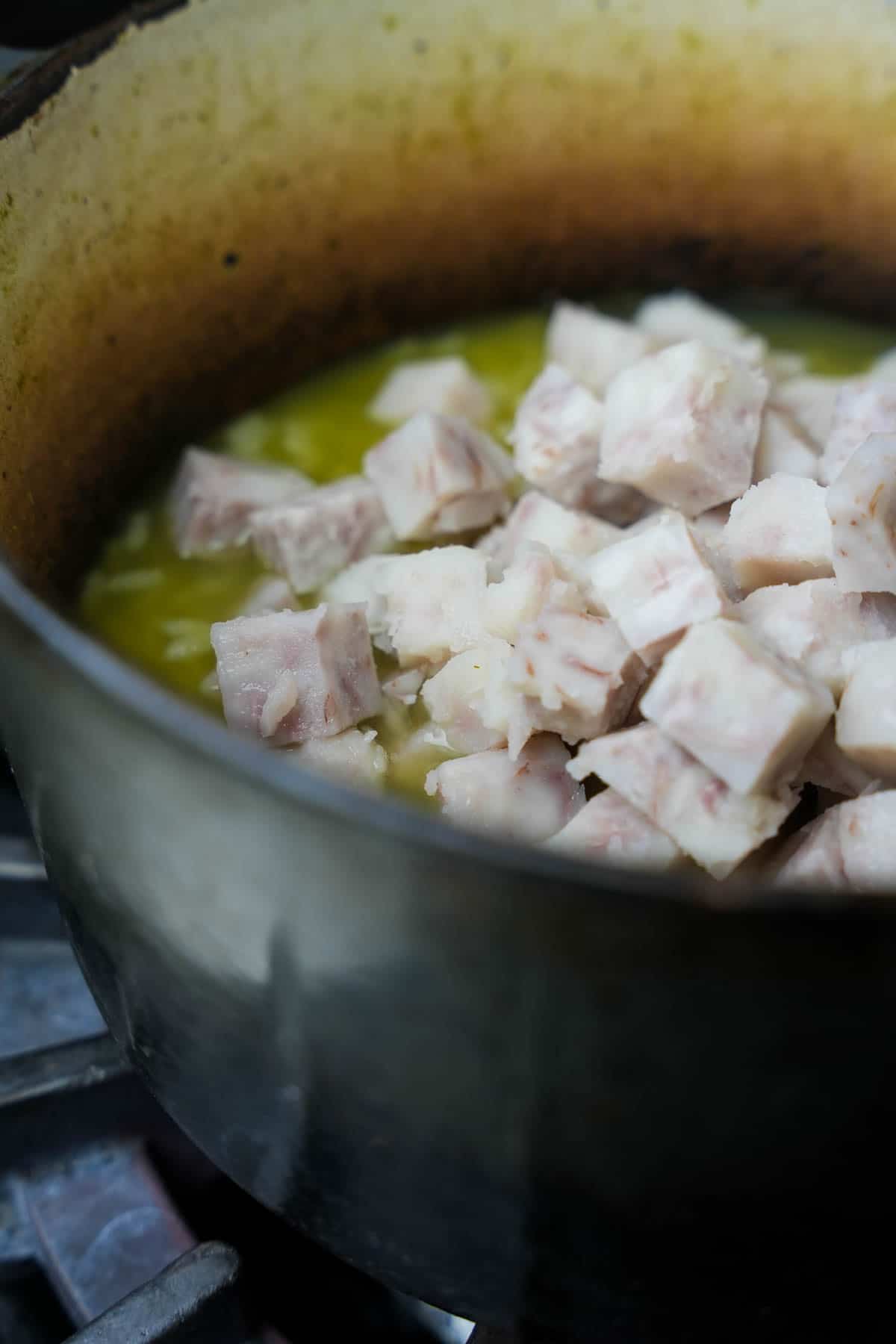
Step Five
Gently fold the steamed taro into the cooked rice, avoiding crushing.

Step Six
In a saucepan, whisk coconut sauce ingredients and bring to a boil over medium heat. Cook for 4-5 minutes until smooth and thick.
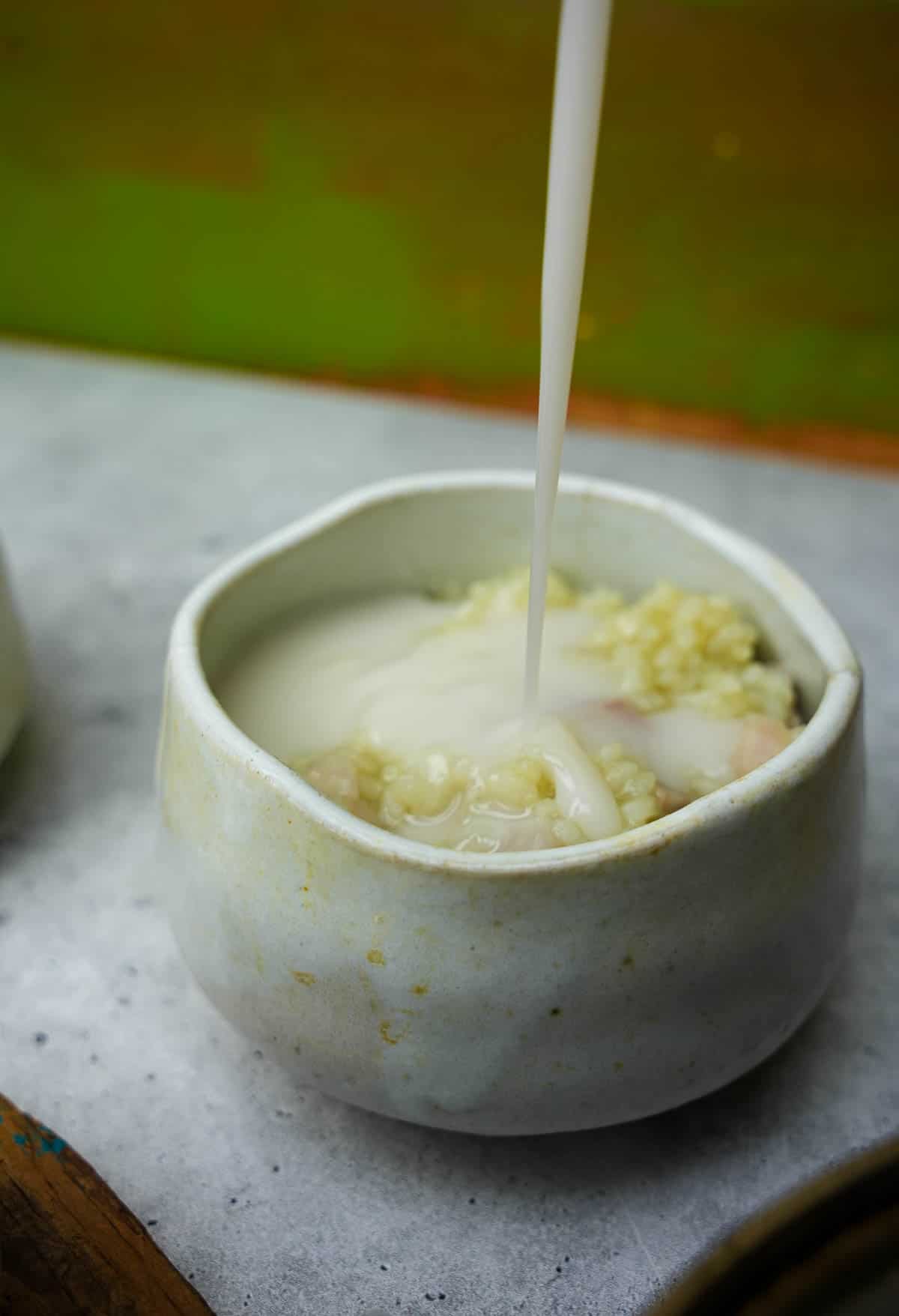
Step Seven
Portion taro pudding into bowls and top with coconut sauce. Optionally, garnish with freshly grated coconut and palm sugar.
💡Serving Ideas
Taro Rice Pudding is an experience that stands well on its own either as a dessert or breakfast. But dessert means you just ate a meal. So here are some such meals to have this as a dessert after:
For lovers of Vietnamese fare, pair this sumptuous pudding with Mi Xao Xi Dau, or banh tran trong made with my succulent seitan. Drizzle it up with homemade vegan nuoc mam.
It's great after any of these killer noodle dishes: mee rebus, bami goreng, mee goreng, ketoprak, or khao suey.
Have it after a filling meal of Tahu Goreng over nasi minyak or biryani served with pickled chilies or pickled mango.

👉Top tips
- Make sure that the pandan leaves are super-clean before blending. Additionally, strain the pandan liquid through a fine a mesh strainer (or a cloth bag) to eliminate any stray particles.
- Steaming the taro cubes until just fork tender is crucial. Test them with a fork after 10 minutes to determine their progress. Overcooking can lead to mushiness, or the taro sorta falling apart into the rice. It will still be yummy, just sorta ugly.
- When folding the steamed taro cubes into the cooked rice, handle them with care. Gently fold the taro pieces, allowing them to become part of the rice mixture while maintaining their individual integrity. Avoid vigorous mixing that might break down the taro.
- As you prepare the coconut sauce, keep a watchful eye on its consistency. Whisk consistently while heating, and ensure the sauce achieves the desired smoothness and thickness before removing it from the heat. The sauce should be pourable, it's like its own pudding on top of your pudding.
🤷♀️FAQ
Glutinous rice is important for the desired creamy texture. If you use regular white rice, you will need to add a little extra tapioca starch to the recipe for it to thicken.
Yes, in fact, I really like this cold anyway.
Store any leftovers in an airtight container in the refrigerator for up to three days, and stir in a little bit of water or coconut milk if it stiffens up too much when chilled.
🔥Other Vietnamese desserts to serve with chè khoai môn:

Che Khoai Mon (Taro rice pudding)
Ingredients
Pudding
- 4 Pandan leaves roughly chopped
- 4 ¼ cups water
- 1 lb peeled taro root cut into 1 cm. Pieces
- ⅔ cup glutinous rice
- ½ teaspoon salt
- ¾ cup sugar
- ½ teaspoon vanilla extract
- 2 teaspoons tapioca starch
- ¼ cup water
Coconut Topping
- 1 cup coconut milk
- ⅔ cup water
- 4 teaspoons sugar
- 1 tablespoon tapioca starch
- ¼ teaspoon salt
Optional garnishes
- Grated coconut
- Palm sugar or coconut sugar
Instructions
- Place the chopped pandan and water into a blender and blend for 60-90 seconds until fully pureed. If you have a small blender pitcher, do this in two batches.
- Strain the pandan liquid through a wire mesh strainer into a bowl, discarding the pulp. Press the pulp in the strainer to get as much of the liquid out as possible without pushing any of the pulp through the strainer.
- Steam the taro cubes for 10-12 minutes or until fork tender.
- Meanwhile, mix together the rice, blended pandan water, salt, sugar, vanilla, and tapioca starch in a pot.
- Bring the mixture to a boil over medium-high heat, then lower the heat and let it simmer for 15 minutes with the lid on.
- Gently fold the steamed taro pieces into the cooked rice. Be careful not to crush the taro while mixing.
- In a saucepan, whisk together the coconut sauce ingredients.
- Bring the mixture to a boil over medium heat, whisking occasionally, and cook for 4-5 minutes until smooth and thickened.
- Portion the taro pudding into bowls, and top each serving with the coconut sauce. Optionally garnish with freshly grated coconut and palm sugar.
Notes

Enter your email & I'll send it to your inbox. Plus, get great new recipes from me every week!
By submitting this form, you consent to receive emails from Cinnamon Snail.



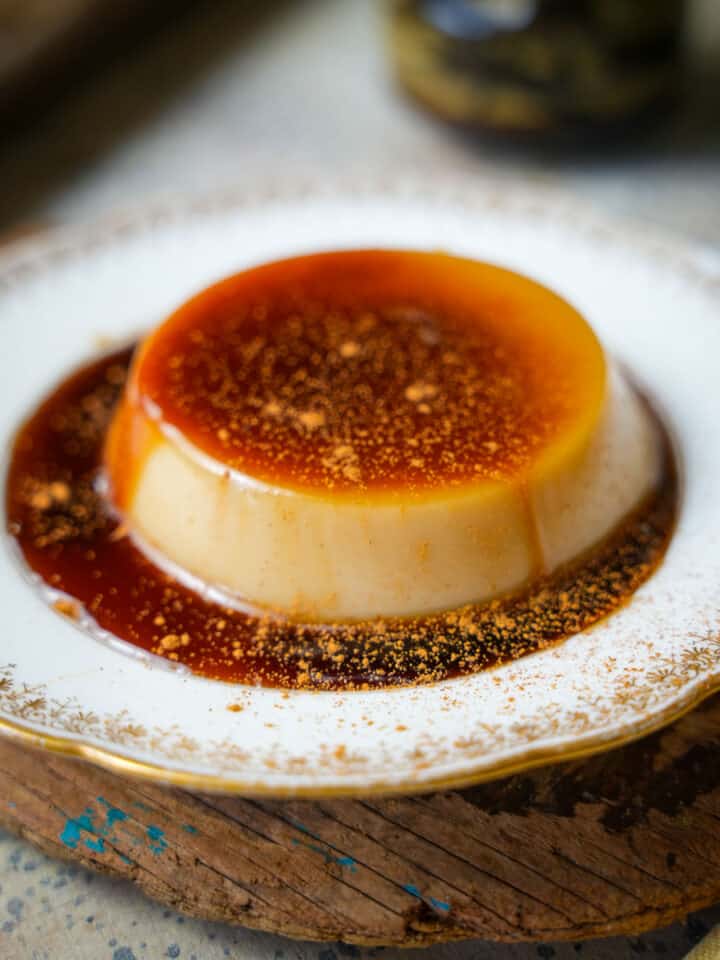






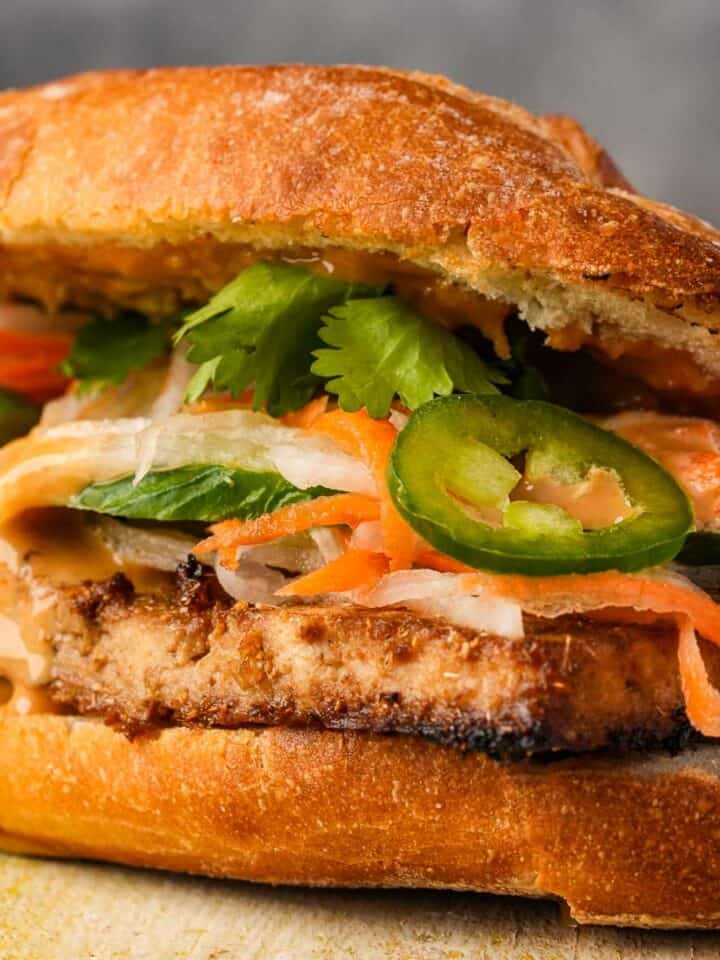
Leave a Reply